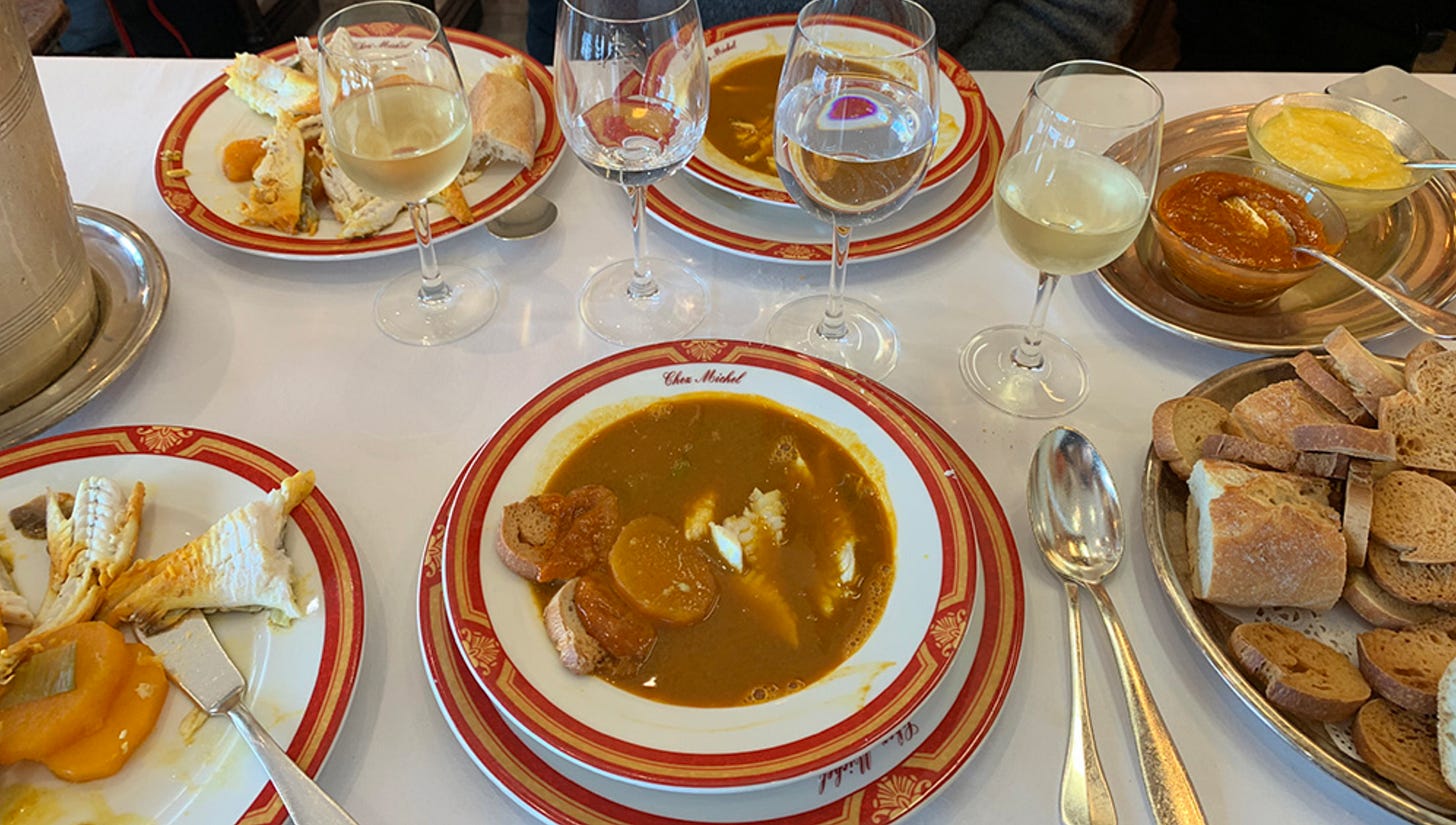Searching for an Authentic Bouillabaisse
How a trip to Marseille inspired a yearly tradition.
If you know anything about me, you know I love getting in the weeds with an intractable French recipe, mucking about with a few ingredients surreptitiously carried home in checked luggage: French flour picked up at a Monoprix, local spices from the bustling market in Aix-en-Provence, or a tin of Sel de Guérande. All in the hopes of getting as close to authentic French food as one can get here in the States.
Why? Because in our experience everything tastes better in France.
I have a vivid memory of cutting into a locally made baguette one morning at a modest hotel just outside of Le Mans. Whether it was the flour, the water filtered through French limestone aquifers, or the salt harvested from the marshes of Brittany, that unassuming bit of bread tasted better than anything we’ve ever had in the States. It was a revelation—and a reminder that knowing how French food is supposed to taste is everything to us.
That pursuit of authenticity has shaped our kitchen at home. Dog-eared copies of Patricia Wells’s The Paris Cookbook (of which I’ve bought dozens of copies to give to friends) and The Balthazar Cookbook (a SoHo institution) occupy pride of place because, in my opinion, these books celebrate not just French flavors but also the authentic process of cooking à la française.
Knowing our penchant for such behavior, it shouldn’t come as a great surprise that we’ve spent years tinkering with one of the most divisive recipes in French cuisine: Bouillabaisse.
What is Bouillabaisse?
Ask a dozen French cooks what an authentic Bouillabaisse contains, and you’ll likely get as many responses. But there's some common ground: invented by Marseilles fish mongers using the unsold day’s catch and already popular around the Mediterranean in the 1700s, this hearty stew consists of a variety of soft and firm-fleshed fish, tomatoes, olive oil, fennel, onions, garlic, thyme, bay, and saffron.
Beyond that, the disagreements begin.
Potatoes? White wine? The addition of shellfish? Orange peel? Sea Urchin? Serve the fish in the soup or after the soup? The toasts served with the dish: rubbed with whole garlic cloves or left dry? And what about all the nuances in making the Rouille—that magnificent, garlicky accompanying spread that is simply a must?
It’s an argument tailor-made for the French and their love of specificity. Even Elizabeth David seems to have thrown in the towel after considering such contortions, admitting in French Provincial Cooking, “It is useless attempting to make a bouillabaisse away from the shores of the Mediterranean”. But even after reading such an opinion, we felt liberated to experiment and create our version of this meddlesome recipe.
And yet.
Much like that baguette in Le Mans, we wanted to know: What does authentic Bouillabaisse taste like?
Subscribe now to complete the story and get the recipe!



